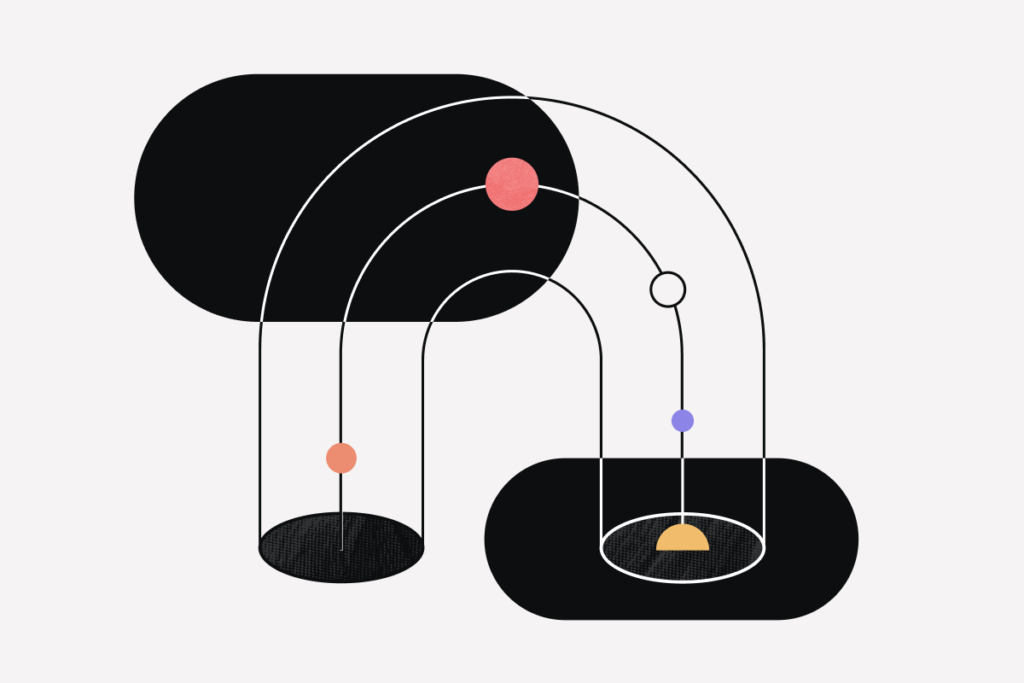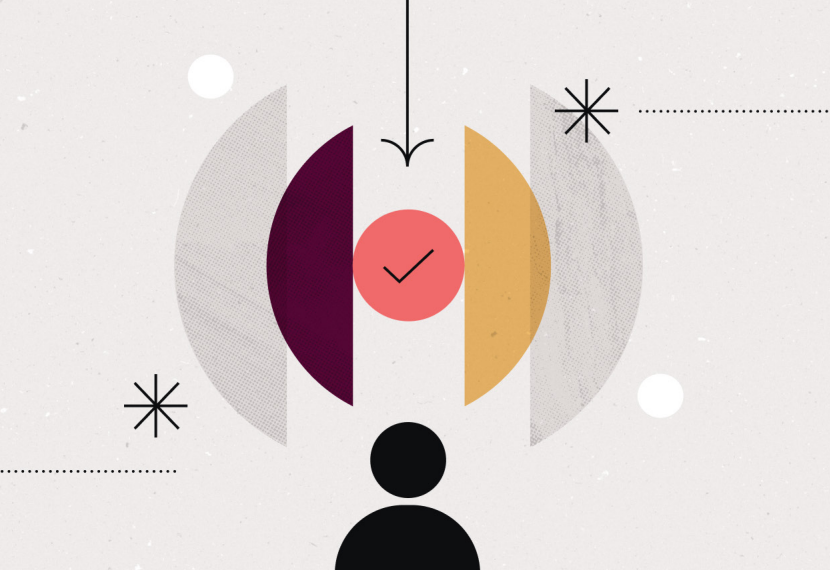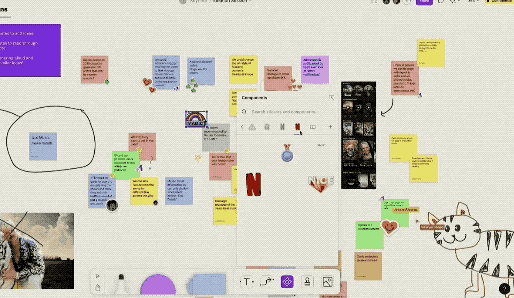Featured
The inside story of how Figma made FigJam—and changed how we brainstorm forever
When Figma CEO Dylan Field gave his keynote at Config, the company’s annual design conference in April 2021, he took the opportunity to restate a core value. More than a year after Covid-19 sent millions into physical isolation, Field’s message carried new gravity:
“Nothing great is made alone.”
During his 22-minute presentation, he revealed that nine-year-old Figma was debuting a new product called FigJam. It felt particularly appropriate for the moment.

With this new product, Figma would bring the ideation process—that early stage for untidy half-thoughts and remarkable what-ifs—out of the office and into the home.
Say yes to the mess
At the start of a creative process, when stakeholders come together to build something new, there’s often a surplus of enthusiasm, a lack of rules, and a compulsion to collaborate using whatever material is available. And that’s sort of the point. It’s why great ideas are often first scribbled on cocktail napkins, marked on physical whiteboards, or jotted down on sticky notes.
This collaborative process is easier with a cloud-based tool that enables distributed teams to brainstorm in a way that feels “multiplayer,” said Field, borrowing a term from the gaming world, during his keynote.
The isolation caused by the pandemic fast-tracked this distributed brainstorming idea. The company would help creators come together.
Here is how Figma made FigJam.
The 950 employees of Figma create design software. The San Francisco-headquartered firm, founded in 2012, claims an impressive slew of corporate customers. They use Figma, a collaborative design platform, to create some of the world’s most ubiquitous digital experiences. How you navigate a Netflix menu: Designed on Figma. How you navigate Zoom: Figma again. It was a tool predominately used by designers and developers.
But as the pandemic wore on, Figma became used for something else: Users were connecting in Figma in a new way that the creators of the UX-focused software hadn’t intended.
“Since the beginning, people have used Figma to brainstorm, to whiteboard, and to diagram,” Field said in his keynote. “They’ve treated Figma almost like a physical space. Over the past year, we’ve asked, ‘How can we help teams connect and have fun together in the early stages of the design process?’ This is the foundation for our new whiteboarding product, FigJam.”

What young leaders really need

Embracing the new age of agility

Fresh strategies for evolving teams
Emily Lin, the founding product manager for FigJam and its launch leader, tells Asana that Figma usage was spiking in unexpected ways. People were dialing into meetings at home and didn’t have a physical whiteboard to share ideas about their work. They used Figma instead, as this Tweet from the time shows.
Lin says that people were having “Figma and Chill” sessions and just… “hanging out in the file.” Figma was no longer only used by UX designers to make product journeys. People were using Figma to socialize. She says Figma employees even threw a murder mystery inside Figma, complete with weapons, characters, and hiding places.
“We thought, ‘Wow, there is something here,'” Lin says. “We could help a lot of people if we built something intentionally for those earlier, messier parts of the brainstorming process.”
How users push product development in new directions
Less than a year after those first Figma and Chill sessions proliferated among users, CEO Field was demonstrating the messy wonder of FigJam during his keynote.
The product he showed was peppered with digital sticky notes, drawings, homebrewed stickers, and, critically, the cursors of every user engaging in the project. The mouse pointers darted around the screen during the presentation, giving off a living sense of productivity and accessibility.

“A goal early on was that if FigJam was to be successful, it had to be a tool that everyone—not just designers—can use,” Lin says. “Those messy parts of the design process involve everyone. More voices and more people involved lead to building better products. That goal meant evaluating every shortcut familiar to professional designers and asking if that term was clear to people who had never used a design tool.
For example, a border around an image in nearly every design tool on the planet is called a “stroke.” But in FigJam, it’s called a “border,” Lin says, adding that there were several conversations around using more accessible language for a more accessible product.
How Figma used Asana
When you’re creating something from scratch, you need “ruthless, ruthless prioritization,” says Lin. “It’s really important to help drive clarity to the teams about what they need to be doing and by when. Asana was helpful with that. I was in Asana daily with the engineers and moving tasks forward.”
Asana was a central place of coordination, says Bersabel Tadesse, a product manager for Figma. People would go to Asana for information about the project, access documents, and contribute to the creation of FigJam.
“It’s really important to help drive clarity to the teams about what they need to be doing and by when. Asana was helpful with that.”
The team used Asana Milestones in Asana to chart the development of FigJam, Lin says. It indicated that her team was excited because they would mention achieving those Milestones.
Tadesse says her team used Asana to build a library of documents in an Asana Project, which was the hub for the organization.
“Asana was the central place people would go to for information about the project and how it was going. Asana helped us connect the documents we were writing to specifics of how we were actually getting the work done.”
But it wasn’t all easy-going. Lin recalls FigJam founding designer Jenny Wen noticing that FigJam had a problem.
FigJam, a tool created for human connection, was missing a “soul.”
Up to that point, Figma did not offer the ability to chat via text or audio. But the concept of FigJam, a tool designed for brainstorming, almost demanded that sort of functionality. After all, what’s a brainstorming session without real-time conversation?
As Lin puts it, at the last minute, Figma put a bunch of engineers on the challenge to add real-time “cursor chat” and audio chat into FigJam. It felt like a risky move; they tell Asana.
“There’s definitely a risk of going all-in on the thesis of bringing in connection and humanity and baking it into the products,” Lin says. “I definitely think that’s something that really paid off. We were pretty nervous. People love using the cursor chat; you’re in the file with people.”
“Once we decided to go all-in on prioritizing fun, it clarified a lot of things for us.”
“Without that energy [of being in the room with someone] coming across, it’s really hard to feel safe. And if you’re not feeling safe, you can’t really be creative,” Wen said when FigJam debuted.
Tadesse says the process of building FigJam offered plenty of opportunities to take shortcuts—and likely lower product quality. The team could’ve just copied Figma features onto FigJam, or it could’ve used existing code versus starting from the ground up. One decision made those corner-cutting opportunities moot: The priority for FigJam would be making it fun.
“Once we decided to go all-in on prioritizing fun, it clarified a lot of things for us,” Tadesse tells Asana. As soon as FigJam launched into beta, users were building things that surprised the engineers and talking about how fun it was on Twitter. The bet to put additional resources and intentionality into giving FigJam “a soul” was paying off.
“The fun people were having reinforced our focus,” Tadesse says.
More than a year later, the FigJam team now numbers more than 40. Lin says that what hasn’t changed is how her team studies users to see how they are using FigJam. “We still go to Twitter every day to look at feedback about FigJam,” she says.
Tadesse says, “being able to tap into the endless creativity of our community and partnering with them to ship a product is something we lean into now.”
And the product keeps growing: The company just launched voting and music in FigJam.
And about the name, FigJam? Fig for Figma and Jam for fun. “Jamming” is a verb the team uses to describe working in FigJam with others. “It captured the joy that we all felt when playing in the product together,” said Priya Kotak, Product Marketing Manager at Figma, when FigJam debuted. (It also happened to be the project’s codename all along.)
As for growth, FigJam’s adoption mirrors Figma’s early adoption. The company also says about two-thirds of new FigJam users are non-designers.
“At the heart of FigJam is its humanity,” Lin reiterates. “We are excited to keep investing in ways to bring out that soul and make the product even more powerful and actionable. Our hope is that FigJam continues to be an indispensable part of a user or a team’s day.”
See also:
- Want to amplify your organization’s productivity? Remember these three words.
- Want to survive a pandemic pivot? How one company pulled off a dramatic reinvention.
- How to reduce video meeting stress with science.
Read this article in French, German, Portuguese, Spanish, or Japanese.
